
3 days ago •
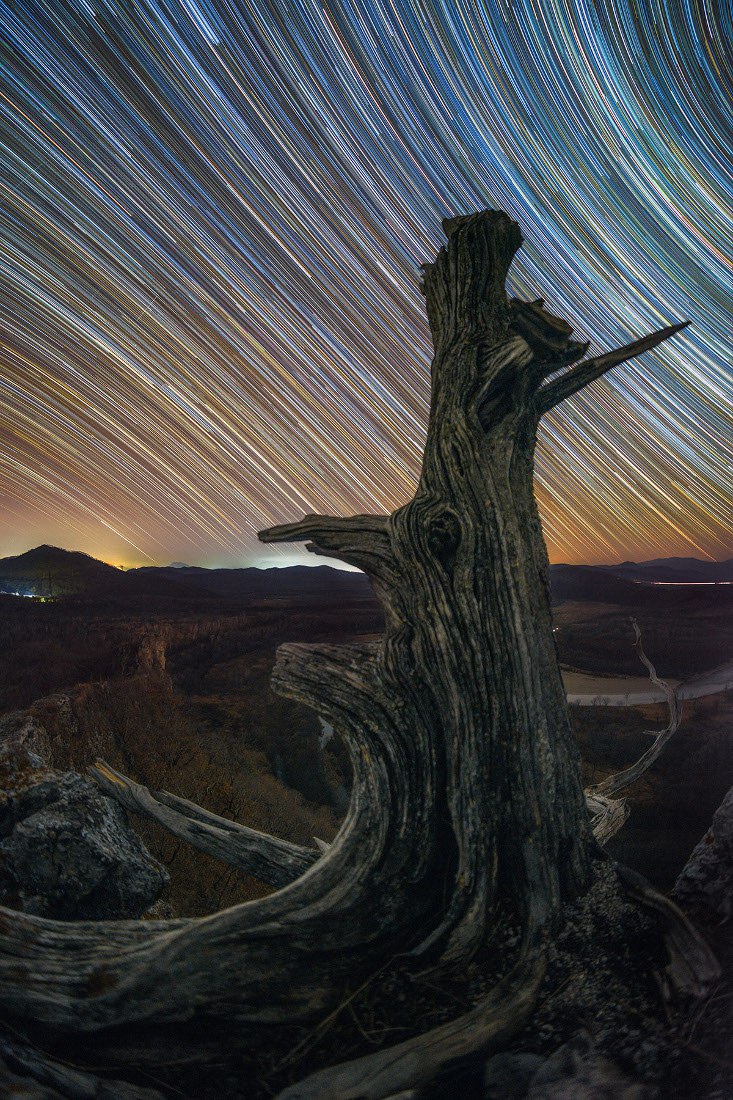
Lines of Time
In time stars trace lines through the night sky on a rotating planet. Taken over two hours or more, these digitally added consecutive exposures were made with a camera and wide angle lens fixed to a tripod near Orel farm, Primorsky Krai, Russia, planet Earth. The stars trail in concentric arcs around the planet's south celestial pole below the scene's horizon, and north celestial pole off the frame at the upper right. Combined, the many short exposures also bring out the pretty star colours. Bluish trails are from stars hotter than Earth's Sun, while yellowish trails are from cooler stars. A long time ago this tree blossomed, but now reveals the passage of time in the wrinkled and weathered lines of its remains.
Related content
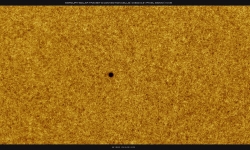
Mercury in Silhouette The small, dark, round spot in this solar close up is planet Mercury. In the high resolution telescopic image, a colorized stac...
3 days ago
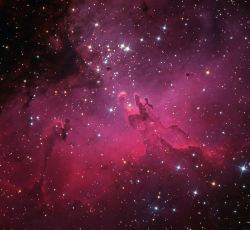
M16 and the Eagle Nebula A star cluster around 2 million years young surrounded by natal clouds of dust and glowing gas, M16 is also known as The Eag...
3 days ago
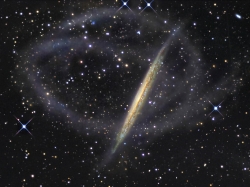
The Star Streams of NGC 5907 Grand tidal streams of stars seem to surround galaxy NGC 5907. The arcing structures form tenuous loops extending more t...
3 days ago
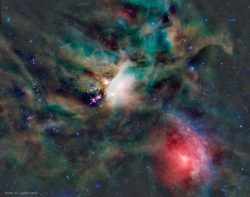
Young Stars in the Rho Ophiuchi Cloud How do stars form? To help find out, astronomers created this tantalizing false-color composition of dust clou...
3 days ago
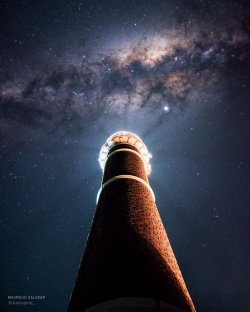
Milky Way over Uruguayan Lighthouse Can a lighthouse illuminate a galaxy? No, but in the featured image, gaps in light emanating from the Jose Ignac...
3 days ago